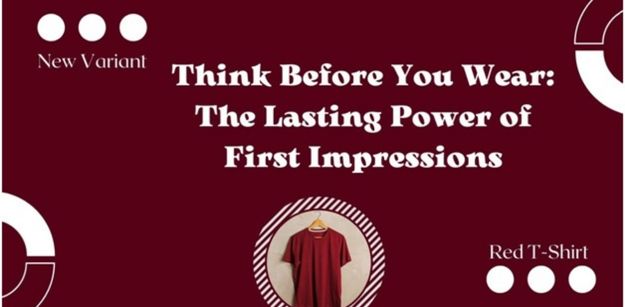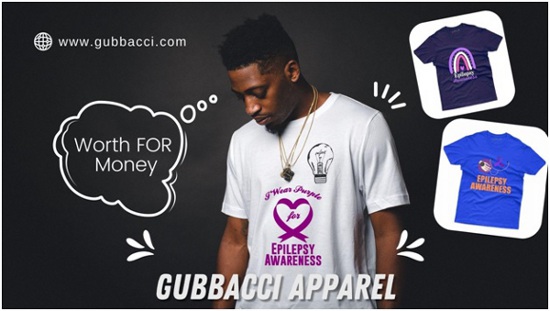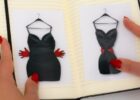Do you remember the last time you glanced at someone and within a few seconds made your first impression of them? It was almost instantaneous, wasn’t it? Before your brain could thoroughly evaluate the situation, it was as though it had been hard-wired to make a snap judgement. Research shows that it takes a person 10-20 seconds to form their first impression of something. It takes us a matter of seconds to look at someone and decide whether we wish to be their friend, and just a matter of seconds to decide if they can be trusted.


The Triune Brain Theory –
According to the triune brain theory, our brain comprises three parts – the reptilian brain, the limbic system and the neo-cortex. The reptilian brain deals with vital body functions such as heart rate, breathing, body temperature and balance, while the neo-cortex deals with rationale, imagination, language and consciousness. However, it is the limbic system which is responsible for making those value-based assessments that impact our first impressions. When any information is sent to our brain, it is first received by the amygdala in the limbic system. The amygdala, within a fraction of a second, determines whether the information is safe or alarming, and based on that, quickly decides what its reaction to it will be. Our first impression of something/ anything may have been good or bad, friendly or unfriendly, trustworthy or mistrustful, however, our brain’s natural instinct is to stick to that first initial judgment, undermining any impression that may contradict that first impression. This goes for not just ourselves, but also for the world in general.
However, it is worth noting that there are many other factors as well that contribute to our formation of those first initial impressions of people, places, memories and things. Our own conditioning, exposure and understanding of what is safe versus unsafe, good versus bad and trusting versus distrust are some other ways that our brains segregate and make those first impressions as conclusions.


As first impressions influence how we perceive our reality, first impressions also play a key role in how people perceive us. They form a basis for how people choose to interact with us. In today’s fast-paced landscape, those initial seconds speak volumes. Manifold choices have led to shorter attention spans resulting in people making quick value-based decisions or in other words, snap judgements. Not just that, though technology has made human life simpler, it has also resulted in higher expectations from people. If in that first impression, one does not create a memorable experience through those initial seconds, there’s every possibility of people making false judgements that are most easily available to them. And once that initial judgement has been made, it is hard for people to get past that first impression no matter how hard one tries.
Our first impressions of people are a lot like the impressions we would make if a restaurant served us uncooked food on a hungry day. Nobody would like it and it goes unsaid that one would think twice before stepping into that restaurant again. The truth is that the foundation and baseline for any long-lasting relationship is very often based on that first impression.
What are the factors that have an impact on those first impressions?
As mentioned above, there are many factors that contribute to a person’s first impression of you. Starting from how a person looks, dresses, speaks, smells, listens – these are all cues and clues that we give away, and reveal a little bit about us. With each interaction we’re creating an image in the mind of another person – be it consciously or subconsciously.
1. Body Language –
Body language is one of the first things people observe in an interaction and your body language gives away more than you might think and more than the words you use to communicate. It is a human tendency to seek out some level of familiarity in the spaces we inhabit and the people we choose to surround ourselves with. And more often than we realize, our body language can give someone a feeling of safety or send signals of alarm. A positive, open body language, as well as the way you dress and carry yourself out in the world, can all be determining factors that put people at ease or unease. Our body language constantly sends out messages about us and based on others’ own modes of survival and perceptions, they can be interpreted or categorized as safe versus unsafe. In other words, your body language is what reveals yourself as someone who is to be trusted or someone to keep a safe distance from.
Smiling faces and happy-looking faces create a certain impression which is on the positive side, making you a more approachable person, and a more trustable person. Not just that, a good smile is one of the most beautiful aspects about a person’s face and reveals more about the person than what the person intends to reveal. We’ve all heard the truism, “You only make one first impression.” This is true and something that we can observe in ourselves too as we interact with the world — and these impressions may be more powerful than we could ever imagine.


2. Presentation –
When it comes to presenting yourself out in the world, be it for a job interview or simply meeting new people, our presentation is key. A 2009 study published in the journal Personality and Social Psychology Bulletin about perceptions revealed that both clothing style and posture played a role in forming those first impressions, while another study found that handshake strength also affected first impressions. It is said in the corporate world that a weak handshake could give the impression of passivity and a laid backness that isn’t necessarily a good thing.
3. Facial similarity –
Our brains are hardwired to register those first impressions. So if we have a bad experience with someone in the past, and then meet someone with similar facial features, it is an automatic instinct in us to be weary and distrustful. We assume based on our past first experiences of things, and if two things look similar enough, our brain gets tricked into reciprocating a fight or flight response and creates an assumed reality based on our first experience of someone totally unrelated. The truth is that we feel safe within our familiarities and often struggle to adapt quickly to change or embrace anything that may be out of the ordinary especially if we don’t already have a reference point for it.
4. Physical appearance –
While a huge part of these impressions stem from societal norms, patriarchal conditioning and fed ideas of beauty, it is true that people make their first impression based on how a person looks, their facial features and the emotiveness on their faces. It is said that the more faces are symmetrical, the higher their chance of being accepted in society. It goes unsaid that what we feed into our bodies, is what we see outside. Having good health and practices keeps one looking younger and more beautiful as their radiance shines from within.
5. Clothing and fashion as an indicators of social status –
It goes unsaid that when a person looks at what you wear, there’s an instant perception that is created about you. This is something we all experience on a day to day basis. We are constantly judging people and putting them into subconscious categories solely on the way they present themselves, the clothes and shoes they wear. Even in countries where the caste system doesn’t play out and manifest as socio-economic divide, through clothing one still manages to create that hierarchy and levels of acceptance in society. When there isn’t a set system of divide, people concoct their own as a way to fit into the society and the world they choose to see and believe in. In places where poverty is on the rise, there is a constant striving to look a certain way so as to hide our own social as well as mental impoverishment. Our clothes give us solace and transport us to whichever strata of society we wish to be in. Clothing and fashion from the best online womens boutique is aspirational and also widens a divide in more ways than one.
The way you dress says a lot about you –
How you choose to reveal yourself through your clothing can say a lot about you right from your profession, the way you spend, your cultural background, emotions and your status in society. Clinical psychologist Dr. Jennifer Baumgartner mentions a peculiar phenomenon in one of her books where she calls it the “psychology of dress.” In her book “You Are What You Wear: What Your Clothes Reveal About You,” she expounds on how you can dictate the impressions others have on them by fixing key psychological issues in their wardrobe. All our behaviors, right down to the choice of clothing and jewelry or personal presentation, tells us something much deeper about ourselves and our subconscious. Our clothing can give away our state of mind without even having to say a word or initiating a conversation. All of our choices have a deeper meaning and stem from deep seated preferences within us that we have accumulated over the years.


The feel-good factor hidden in clothing and fashion –
Recently, a study from North western University articulated and expounded on a concept called “enclothed cognition”. The study focuses less on what your clothes say about you to others but more about what your choice of expression tells you – the wearer, about yourself. It teeters on the lines of what your clothes tell you and how they have the power to change the way you feel about yourself. In the study, the researchers gave out laboratory coats to its participants and gave them two narratives – one of them was that it was a doctor’s coat, and the other was that it was a painter’s coat. As the participants performed the same tasks assigned to them, there was a noticeable difference in the two categories. The ones who were told that they were wearing a doctor’s lab coat were far more careful, observant and meticulous as compared to their painter’s coat counterparts.
Aside from the study itself, another close example that we can all relate to are makeovers. While we see how drastic makeovers in movies change the way the character behaves and thinks, we give little to no thought as to what brought about that change, exuberance and confidence. It is true that the way we dress affects the way we feel and the way we define our social acceptance in society. Dressing to the nines helps us feel some joy and like we are a part of something even if the day we have had might have been a horrible day. Similarly, when we’re low and not feeling great, the urge to dress up is affected just as much and if we had a choice, we’d prefer to stay in our pajamas all day.
Whether we’re feeling high or low, there’s a style and clothing for every mood, and each time we wear something on our skin, it reveals a little about ourselves to the world even if we don’t intend to. Day in and day out, we are subconsciously telling ourselves and the world stories with the outfits we wear, the way we speak, the way we listen, sound, and look. What is your story and what is the story you tell the world? What influences the first impressions you create, and the ones the world creates for you?
Consider exploring gubbacci custom T-shirt collections and we believe that they will provide you the power for a good first impression and also convey messages to the world that matter to you.


Here’s a collection dedicated to all the wonderful dance forms in India. If you love fitness, dance, yoga and the likes, check out our Stock Market Collections, Alien Collections, Birthday Collections, Anniversary Collections and Bikers Collections. Let us know in the comments below.



